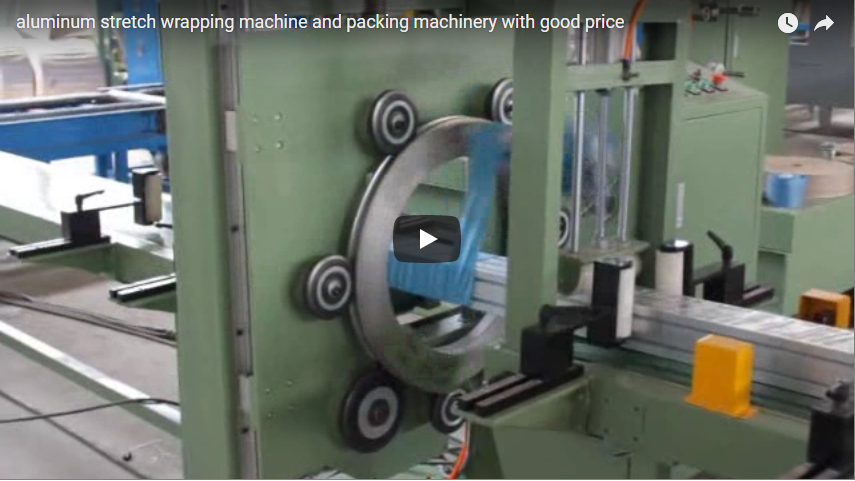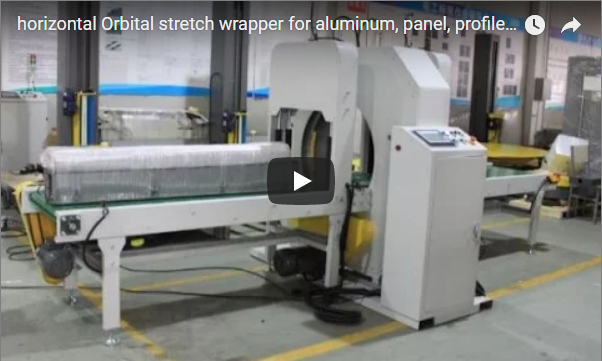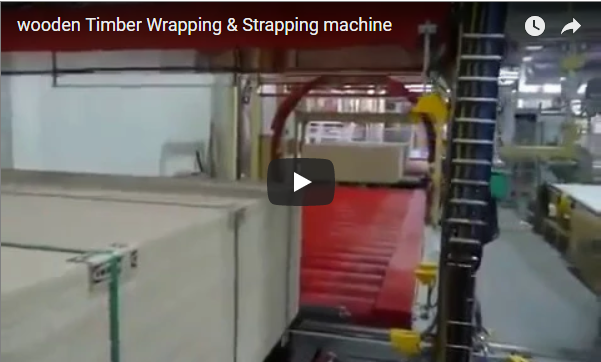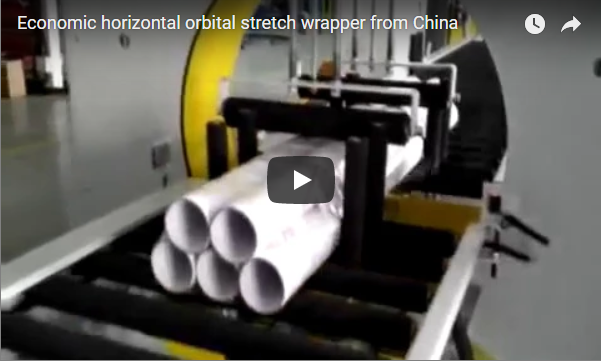Optimizing Glass Door Packaging: A Technical Guide to Horizontal Wrapping Machines
Video demonstration of a horizontal wrapping machine packaging a glass door.
Glass doors, while aesthetically pleasing, present unique challenges during handling, storage, and transportation due to their fragility and susceptibility to surface damage. Effective packaging is paramount to prevent scratches, chips, and breakage. Horizontal wrapping machines, specifically orbital stretch wrappers, offer an automated and efficient solution tailored for long, flat products like glass doors. This guide provides a technical overview and operational insights into these machines.
1. Understanding the Horizontal Wrapping Process
Unlike traditional turntable wrappers, horizontal wrapping machines operate on an orbital principle.
- The glass door is conveyed horizontally through a vertical rotating ring.
- This ring carries a roll of stretch film.
- As the door advances, the ring rotates, dispensing and applying the stretch film around the door's profile.
- This creates a continuous, tightly wrapped cocoon around the product, securing it effectively.
2. Key Technical Specifications and Features
Understanding the components is crucial for selection and operation:
-
Infeed and Outfeed Conveyors:
- Type: Typically powered roller or belt conveyors.
- Function: Transport the glass door smoothly into and out of the wrapping zone. Speed synchronization with the wrapping ring is critical.
- Considerations: Conveyor width and load capacity must match door dimensions and weight. Smooth, non-marring roller surfaces are essential.
-
Rotating Ring Assembly:
- Mechanism: The core orbital component holding the film carriage.
- Specifications: Ring diameter (determines maximum product cross-section), rotation speed (RPM, impacts throughput).
- Drive System: Usually an electric motor with controlled speed and positioning.
-
Film Carriage System:
- Function: Dispenses the stretch film onto the product.
- Key Feature: Pre-Stretch: Modern machines incorporate powered pre-stretch systems (e.g., 150% to 300%). This stretches the film before application, maximizing film yield (reducing cost) and increasing load containment force.
- Tension Control: Electronic or mechanical systems maintain consistent film tension during wrapping, crucial for protecting fragile glass.
-
Press Rollers:
- Function: These rollers gently press against the top (and sometimes sides) of the door as it passes through the wrapping zone.
- Material: Often covered with soft polyurethane (PU) or sponge, as noted in the video. This provides several benefits:
- Protection: Cushions the glass, preventing scratches or pressure marks from the wrapping process itself.
- Stability: Keeps the door steady during wrapping, ensuring an even film application.
- Conformity: Helps the film conform better to the door's shape.
- Adjustment: Typically adjustable (pneumatically or manually) to accommodate different door thicknesses.
-
Control System:
- Type: Often PLC (Programmable Logic Controller) based.
- Interface: HMI (Human-Machine Interface) touch screen for parameter setting and diagnostics.
- Adjustable Parameters: Ring speed, conveyor speed, film tension, pre-stretch ratio, number of wraps at leading/trailing edges, film overlap percentage.
-
Film Cut and Clamp System:
- Function: Automatically cuts the film tail after wrapping and clamps it for the start of the next cycle. Increases automation and safety.
-
Safety Features:
- Standard safety includes emergency stop buttons, safety guarding or fencing around the rotating ring, and potentially light curtains at the infeed/outfeed.
3. Operational Best Practices and Experience Sharing
Maximizing efficiency and safety requires attention to operational details:
-
Material Selection:
- Use high-quality LLDPE (Linear Low-Density Polyethylene) stretch film designed for machine application.
- Select the appropriate film gauge (thickness, measured in microns or gauge) based on door weight and required protection level.
- Ensure consistent film quality to avoid breaks and ensure proper pre-stretch performance.
-
Machine Setup and Adjustment:
- Tension: Set the film tension carefully. Too low results in a loose wrap; too high could potentially stress the glass or cause film breaks. Start with manufacturer recommendations and fine-tune.
- Overlap: Adjust conveyor and ring speeds to achieve the desired film overlap (e.g., 50%). Consistent overlap ensures complete coverage and better load integrity.
- Press Rollers: Adjust pressure appropriately for the door thickness – enough to stabilize but not so much as to cause damage.
- Pre-Stretch: Utilize the pre-stretch feature to optimize film usage. Record optimal settings for different door types.
-
Loading and Unloading:
- Handle glass doors carefully when placing them on the infeed conveyor to prevent damage before wrapping.
- Ensure the door is centered and aligned correctly as it enters the machine.
-
Routine Maintenance:
- Follow the manufacturer's recommended preventative maintenance schedule.
- Keep rollers (conveyor and press rollers) clean and free from debris or adhesive buildup.
- Check and lubricate moving parts (ring assembly, drive chains/belts) as required.
- Inspect and clean or replace film cutting blades regularly.
- Verify safety features are functioning correctly.
4. Benefits of Using Horizontal Wrappers for Glass Doors
Compared to manual methods or less specialized equipment, horizontal wrappers offer distinct advantages:
- Enhanced Product Protection: Provides complete, consistent coverage with controlled tension, significantly reducing the risk of scratches, abrasions, dust, and moisture damage during handling and transit. The soft press rollers specifically minimize direct pressure points on the glass.
- Increased Efficiency and Throughput: Automation drastically speeds up the packaging process compared to manual wrapping, allowing for higher production output.
- Optimized Material Consumption: Powered pre-stretch systems can reduce film usage by 50% or more compared to manual or no-stretch wrapping, leading to significant cost savings.
- Improved Load Stability: A tight, uniform wrap unitizes the door, making it more stable and easier to handle, stack (if applicable), and transport safely.
- Professional and Consistent Packaging: Delivers a neat, professional packaging appearance consistently, enhancing product presentation.
- Reduced Labor Requirements: Automates a labor-intensive task, freeing up personnel for other duties.
5. Integration Considerations
Horizontal wrappers can be standalone units or integrated into a larger packaging line. Consider:
- Upstream Processes: Feeding from assembly, cleaning, or inspection stations.
- Downstream Processes: Moving wrapped doors to labeling, palletizing, or staging areas.
- Automation Level: Can range from manual loading/unloading to fully automated lines with sensors and robotic handling.
Conclusion
Horizontal orbital wrapping machines represent a specialized and highly effective technology for packaging glass doors. Key features like soft press rollers, powered pre-stretch, and precise control systems directly address the need for damage prevention and efficiency. By understanding the technical specifications and adhering to operational best practices, fabricators and distributors can leverage these machines to protect their products, reduce costs, and streamline their packaging operations.
For more details on specific machine configurations, explore horizontal wrapping machine options.






